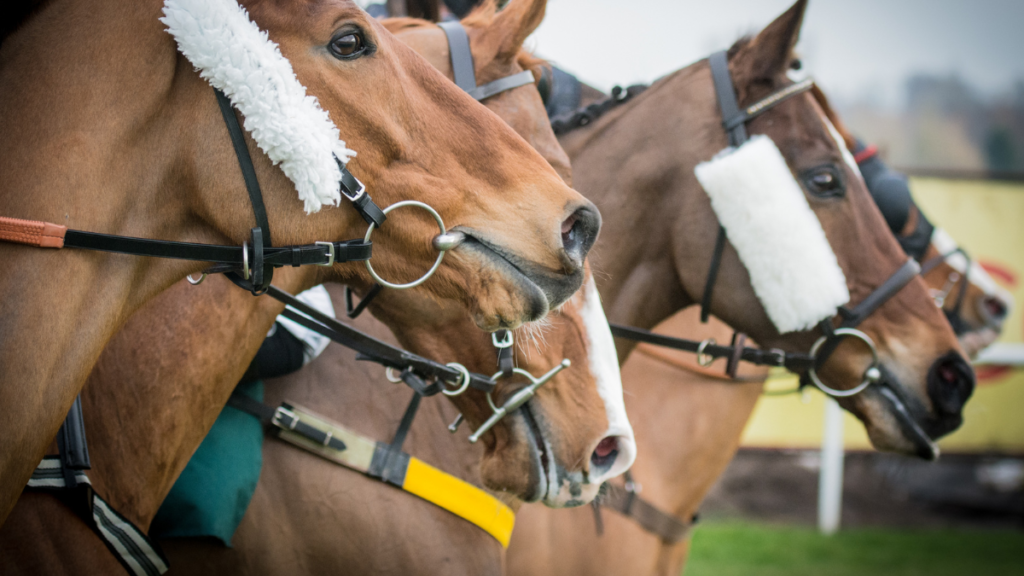The Top 10 Surprises in Belmont Stakes History to Remember


The Belmont Stakes, Presented by NYRA Bets, the oldest of the three Triple Crown events, has experienced its fair share of upsets, most of which have occurred in the final third of the race’s 153-year history. Twenty horses with victories in the Kentucky Derby and Preakness Stakes have entered the Belmont Stakes in the post-World War II era, only to have their Bid for immortality rejected (this includes I’ll Have Another in 2012, who was scratched the day before the Belmont due to an injury). Additionally, all eight of the highest-priced Belmont Stakes champions have won since 1961. Those two statistical gems appeared in the same race five times.
Let’s look back at 10 of the race’s most historic upsets before the Belmont Stakes 154 on June 11, which is shaping up to be a wide-open contest potential of producing its surprise outcome.
Cavan defeated a hurt Tim Tam in 1958
With a six-race winning streak going into the 1958 Belmont, Tim Tam was expected to lead legendary Calumet Farm’s devil’s red and blue silks to a third Triple Crown, joining Whirlaway (1941) and Citation (1948). Tim Tam, a homebred son of the illustrious Tom Fool, had bravely charged from off the pace to win two of Florida’s major prep races, the Fountain of Youth and the Florida Derby, as well as an allowance at Keeneland, before winning the Derby Trial at Churchill Downs and winning the Kentucky Derby by a half-length four days later. He went on to win the Preakness by a length and a half, and in the 90th Belmont, he was a prohibitive 0.15-1 favorite.
Tim Tam and Irish-bred Cavan moved into the lead going into the far turn at Belmont after Cavan’s victory in the Peter Pan Stakes. Still, a 4.90-1 shot, Cavan maintained his information going into the homestretch and eventually pulled away to win by six lengths. After the race, it was discovered that Tim Tam had fractured a sesamoid bone in his ankle, which made his performance all the more impressive. Tim Tam came in a clear and hard-fought second. Tim Tam’s racing career was over, but he continued to succeed as a sire at Calumet for many years before passing away in 1982 at 27. The lowest-priced betting favorite to lose the Belmont Stakes, he was inducted into the Racing Hall of Fame in 1985.
Sherlock stunned Carry Back in 1961.
The following Belmont upset on our list has a comparable plot. Carry Back was a working-class hero of a horse. He came from humble beginnings to race an impressive 21 times as a 2-year-old. He then won four of seven starts in 1961 before the Kentucky Derby for co-owner, breeder, and trainer Jack Price (for more information on carrying Back’s history, see Keeler Johnson’s ABR feature). This form held steadfast in his first two Triple Crown races as he closed from 18 lengths back to win the Kentucky Derby by three-quarters of a distance and then charged from 15 lengths behind to win the Preakness by the same margin. He gave fans a thrill in most of his victories, coming from off the pace and weaving through traffic to get up in time. The Florida-bred son of minor sire Saggy entered the Belmont as the 0.45-1 betting favorite against eight rivals, including 65.05-1 longshot Sherlock, the Blue Grass Stakes winner, and Derby and Preakness fifth-place finisher.
Up front of an audience that included former President Dwight Eisenhower and first lady Mamie Eisenhower at Belmont Park, Carry Back played up to his name and racing style by settling far off Globemaster’s pace, with Sherlock closing in on second. Sherlock and Braulio Baeza overtook Globemaster in the last strides to win by 2 34 lengths and become (at the time) the highest-priced Belmont Stakes winners in history. The Derby and Preakness champion failed to mount his customary rally.
Price gave Carry Back a much-needed break after he was forced to withdraw from the Belmont due to an ankle issue. He won big races, including the Whitney Handicap and the Met Mile, upon his reappearance in August 1961. He continued to compete until fall 1963. He retired with 21 victories, 11 seconds, and 11 thirds in 61 starts and survived until 25, dying in 1983. He was a champion who lasted a very long time. In 1975, Carry Back was honored with a spot in the Racing Hall of Fame.
1971 saw the spectacular run of Canonero II come to an end.
In 1971, Canonero II was the big horse racing story. Born in Kentucky but now based in Venezuela, he made two unsuccessful runs as a 2-year-old in the United States before being brought back for the Kentucky Derby after dominating seven of 10 appearances in his native country. Canonero II astonished observers by romping by 3 34 lengths despite being regarded as an afterthought in the Derby and being included in the six-horse mutual field wager at 8.70-1 odds. Two weeks later, he followed it up with one 12-length victory in the Preakness, setting a new track record. By then, the horse’s Venezuelan connections had won over the media and the general public with their assurance and assurance, joie de vivre. The anticipation grew in the three weeks coming up to the Belmont, despite rumors that Canonero II’s training had been put on hold because of a skin rash and a minor foot problem.
Canonero II got the early lead and maintained it until the backstretch. Still, as pressure mounted entering the far turn, Pass Catcher fought back from third to pass him and surge ahead at the top of the stretch, setting a then-record Belmont Stakes attendance of 82,694. Within five days of finishing second in a stakes race at Garden State Park in New Jersey, the colt, a 34.50-1 outsider, was brought back into the Belmont by trainer Ed Yowell. Pass Catcher defeated deep closer Jim French in the last stretch to win by three-quarters of a length at odds of 34.50-1, while 7-10 favorite Canonero II faded to fourth. Walter Blum was in the lead.
The headline on Sports Illustrated’s front page read, “Canonero Should Not Have Run,” and the race recap quoted a vet as saying, “The colt’s delay in training did take its toll on his ability to conquer the “Test of the Champion,” following the Belmont.” Canonero II was purchased by Robert Kleberg’s King Ranch for $1.5 million following the Belmont and maintained in the country. Still, he never recovered from his Preakness and Derby form, winning just once in eight additional starts by a five-length margin over Riva Ridge, the 1972 Derby and Belmont winner. Read Bob Ehalt’s ABR article to learn more about him.
1979: “The Bid” is rejected, and Coastal wins.
Even though the 1979 Belmont winner, Coastal, had reasonable 4.40-1 odds, the race counts as an upset. Why? Due to the caliber of the third-place finisher, one of the all-time greats in the sport. Before the Kentucky Derby, Spectacular Bid had previously been selected as the top 2-year-old male of 1978 after winning his first five starts at three by wide margins. He crushed the field at Churchill on the first Saturday in May, winning by 2 34 lengths with 19-year-old rider Ron Franklin. Then, after a five 12-length victory in the Preakness, seasoned journalists and railbirds were at least ready to admit that trainer Bud Delp’s claim that Spectacular Bid was “the best horse to look through a bridle” wasn’t entirely implausible.
Spectacular Bid, who was the 3-10 favorite going into the 111th Belmont, trailed through the first turn when Franklin prodded him into the lead halfway down the backstretch. The choice to not give Spectacular Bid a break once the horse took the lead was questioned by Delp’s son, a fellow adolescent, and some horse racing observers after the race. The pace was already quick. Despite this, the colt seemed to be in control of the race and headed for a third straight Triple Crown until he crossed the quarter pole, at which point he started to shorten strides.
While stalking far back in fourth, Coastal, a lightly raced but highly rated colt who had won the Peter Pan Stakes and was nominated for the Belmont, rallied on the rail at the top of the stretch and then passed Spectacular Bid as they got close to the sixteenth post. Golden Act, the Preakness runner-up, narrowly edged out Spectacular Bid, who was exhausted but still giving it her all, for second place as Coastal won by a margin of 3 14 lengths. Delp revealed to the media the day after the race that Spectacular Bid trod on a safety pin on the morning of the Belmont but that the incident didn’t seem to have damaged him at all. Those who bet on the Bid to make history are still debating whether that or Franklin’s ride had anything to do with his Belmont performance.
After being ridden by Bill Shoemaker, Spectacular Bid won three of his subsequent four races in 1979. (losing to 1978 Triple Crown winner Affirmed by three-quarters of a length in the Jockey Club Gold Cup). He then stayed unbeaten in nine subsequent runs in 1980, capping off one of the most successful campaigns in equine history with a victory in the Woodward Stakes by walkover. With purse earnings of about $2.8 million and a record of 30 starts, 26 wins, 2 seconds, and one extremely significant third, Spectacular Bid retired as the all-time top money winner in North America. Check out Bob Ehalt’s ABR profile to learn more about the 1982 Hall of Fame inductee.
Temperance Hill surpassed Genuine Risk in 1980.
Genuine Risk’s attempt to become the first filly to win the 112th Belmont Stakes since 1905 was the main topic of discussion leading up to the race. The horse trained by Leroy Jolley, who had previously unexpectedly won the Kentucky Derby, came in second place to D. Wayne Lukas’ Codex in the Preakness. Temperance Hill, on the other hand, arrived unnoticed after skipping the Kentucky Derby and Preakness. The horse, trained by Joseph Cantey and owned by John Ed Anthony’s Loblolly Stable, had won the Arkansas Derby, which was at the time a good accomplishment. Still, he was 0 for six outside of Oaklawn Park and did not receive a Kentucky Derby nomination.
The betting public passed over temperance Hill at odds of 53.40-1 despite Anthony paying a late fee to nominate his colt to the Belmont after suffering three straight defeats in New York and Pennsylvania. Temperance Hill, competing on a muddy track, was rated sixth through the backstretch and gradually worked his way into contention as the pack approached the far turn. Right behind them, Genuine Risk attacked leader Rockhill Native in the early stretch, and the two engaged in a contest of wills that saw Temperence Hill win by two lengths in the end (Codex finished seventh).
With victories in the Travers Stakes, Jockey Club Gold Cup, and Super Derby later in 1980, Temperence Hill demonstrated that he wasn’t just a one-race wonder and was worthy of the Eclipse Award for champion 3-year-old male. Returning to competing against her sex, Genuine Risk finished her career with three more victories in five attempts, earning her a place in the Hall of Fame in 1986. Check out Keeler Johnson’s ABR page for additional information on the champion filly.
Lemon Drop Kid upsetting, Charismatic injured in 1999
In the 131st Belmont Stakes, a third consecutive Triple Crown was on the line after Silver Charm and Real Quiet closed in 1997 and 1998, respectively. Early in 1999, Charismatic, trained by D. Wayne Lukas and owned by Robert and Beverly Lewis, came out of the claiming ranks to win the Preakness and the Kentucky Derby at odds of 31.30 to 1. By the time the Belmont came around, he was no longer being neglected. He started as the 8-5 favorite, followed by Menifee, the Preakness and Derby runner-up, at 2.60-1, and Silverbulletday, a filly who would go on to become a Hall of Famer, at 5.10-1.
On the other side, Lemon Drop Kid was a 29.75-1 long shot because of his subpar 3-year-old campaign. For owner Jeanne Vance and trainer Scotty Schulhofer, he had won the Grade 1 Futurity Stakes at Belmont Park when he was just two years old. However, he had only had one win in four career starts leading into the Belmont, coming in an allowance race at Keeneland. He did, however, come in third place in the Peter Pan Stakes, his final Belmont prep race, despite competing on a muddy track and in close quarters. Two weeks later, Schulhofer wheeled him back in the one-and-a-half-mile classic after keeping him at Belmont Park.
Jockey Chris Antley sent charismatic to follow Silverbulletday through the backstretch. As Lemon Drop Kid made a comeback from midpack under jockey Jose Santos, Charismatic pushed up to engage her. Lemon Drop Kid’s momentum allowed him to take the lead in the middle of the stretch, and 54.75-1 long shot Vision and Verse passed Charismatic on the inside as the classic twin winner started to falter. The race between Lemon Drop Kid and Vision and Verse ended with Lemon Drop Kid winning by a head and setting off a $1,537 exacta.
War Emblem stumbles in 2002 as Sarava lights up the tote board.
The 70.25-1 winner of the 134th Belmont Stakes saw yet another Triple Crown attempt fall short, this time because of an unexpected misstep out of the starting gate. War Emblem showed up exceptionally quickly and had enough stamina to hang on late to win the Preakness by three-quarters of a length after romping in the Kentucky Derby. Prince Ahmed bin Salman of the Thoroughbred Corporation moved the colt to trainer Bob Baffert’s barn, making him 2-for-2 for the trainer. Baffert and jockey Victor Espinoza’s plan for the Belmont were straightforward: “Get in the gate, break, and go,” the trainer told Sports Illustrated.
The reverse took place. Espinoza had to hustle the 1.25-1 favorite up into contention while being penned up on the inside as the field moved into the backstretch. War Emblem almost fell to the ground as soon as the gate opened. As the race entered the far turn, War Emblem attempted to overtake pacesetter Medaglia d’Oro but was unsuccessful. By the five-sixteenths pole, he had lost all hope of winning.
Sarava had been playing second fiddle in trainer Ken McPeek’s stable for most of the spring behind Harlan’s Holiday, the injured Louisiana Derby winner Repent, and Florida Derby and Blue Grass Stakes winner (and Kentucky Derby post-time favorite), Harlan’s Holiday. After winning the Sir Barton Stakes at Pimlico on the Preakness undercard, McPeek decided to enter Sarava. Ridden by Edgar Prado, the longshot pushed up between rivals as they entered the stretch before battling with Medaglia d’Oro to the line and winning by a half-length. He set a Belmont Stakes record with a $142.50 payout on a $2 wager. War Emblem recorded one more victory in his final three appearances, a wire-to-wire victory in the Haskell Invitational, but Sarava would never again record a win. War Emblem passed away there in 2020, and Sarava currently resides there.
It turned out that Charismatic had a condyle fracture in the middle of the stretch, and Antley had saved his life by lifting him at the finish line. Charismatic’s unfortunate injury in the Belmont, like Tim Tam’s 41 years earlier, had a happy ending because he was retired and lived for another 18 years before passing away in 2017 at the Old Friends retirement farm in Georgetown, Kentucky (read more about him in Bob Ehalt’s ABR profile). Lemon Drop Kid had a great year in 2000, winning the Whitney Handicap, Woodward Stakes, Brooklyn Handicap, and Suburban Handicap. He also went on to win the Travers later that summer. That year, he received the award for best senior male, eventually succeeding as a sire.
Birdstone silences a record audience in 2004.
The 2004 Belmont Stakes may not have broken the parimutuel record for “largest upset” (see the previous item). Still, it unquestionably owns the title of “most heartbreaking finish” among modern horse racing enthusiasts. Even the Triple Crown bids of fan favorites Silver Charm and Real Quiet in the 1990s or the rivalry between Sunday Silence and Easy Goer in 1989 couldn’t compete with the degree of excitement for the Belmont Stakes that June. And Smarty Jones is to blame for everything. The Pennsylvania-bred horse had drawn in a large sports audience after going unbeaten in eight runs, with his most recent victories coming by impressive margins of 2 34 lengths in the Kentucky Derby and 11 12 lengths in the Preakness. He was the classic “small guy’s horse,” owned by elderly Roy and Pat Chapman, trained by John Servis, and ridden by amateur Stewart Elliott. He had connections to the Keystone state. However, his talent was magnificent, and he outclassed the Belmont field, which included Birdstone, a well-bred horse managed by Nick Zito and owned by Saratoga legend Marylou Whitney who had disappointed on the track after finishing eighth in the Derby, 15 14 lengths behind Smarty Jones.
In the nine-horse Belmont field, Smarty Jones was therefore sent off as the 0.35-1 favorite while Birdstone was 36-1. Smarty Jones broke well from the outside post in front of a still-record 120,139 spectators eager to witness history, but Elliott kept him just off the early lead until the field reached the backstretch. Horseplayers and fans continue to argue over whether Elliott moved too soon on Smarty Jones, much like with Ron Franklin’s ride on Spectacular Bid 25 years prior. After the half-mile mark, he gained control and kept going strong over the lengthy backstretch despite being pressed. Midway through the far turn, Elliott released his colt, and Smarty burst onto the field.
Only Birdstone, who had worked his way into second under Edgar Prado, had a chance to overtake Smarty Jones as they neared the homestretch. It appeared for a brief period that Smarty Jones, although being worn out, would yet have enough energy to stave off his rival and win the Triple Crown for the first time since 1978. However, Smarty lost the lead in the closing steps, and the numerous frantic cheers abruptly ended. Birdstone won the race by a length, and Zito, Prado, and Whitney were so disappointed that they offered words of comfort to the crowds of Smarty supporters in their post-race comments. Even though he never raced again, Smarty Jones is still widely regarded as the most well-liked American racehorse of the twenty-first century and the key figure in a Belmont Stakes that no one who witnessed it will ever forget. View his profile on Tom Pedulla’s ABR to learn more.
2008: Big Brown fails, Da’ Tara wires the
Big Brown, a 2008 Triple Crown contender, received enthusiastic fan support going into the Belmont with his unbeaten 5-0 record and open-length victories in the Kentucky Derby and Preakness Stakes, despite not being on the same level as Smarty Jones. Big Brown was a big 3-10 favorite in the Belmont Stakes, the lowest odds for a post-time choice since Spectacular Bid in 1979. He was owned by a group led by Mike Iavarone’s IEAH Stables and trained by the talkative and contentious Rick Dutrow. But specific worries persisted. His lineage wasn’t precisely solid for the demanding 1-and-a-half-mile “Test of the Champion.” Second, Big Brown’s training had been halted following the Preakness due to a quarter-crack. The colt did not receive a monthly injection of what was then a legal steroid in mid-May, according to Dutrow, raising the possibility that the substance contributed to his success earlier in the spring.
Whatever the reason, Big Brown was a virtual non-entity in the Belmont, bucking jockey Kent Desormeaux’s attempts to keep him under control through the first turn and into the backstretch. Unheralded Da’ Tara, the longest shot among the nine Belmont contenders at 38.70-1, jumped out to an early lead under Alan Garcia and never faced any opposition. When Da’ Tara entered the stretch on her way to defeating Denis of Cork by a margin of 5 14 lengths, Desormeaux had already pulled Big Brown to his feet and ordered him off the track.
Four years after Birdstone’s victory over Smarty Jones, Da’ Tara gave Nick Zito his second Belmont victory. However, this time, annoyance and even schadenfreude replaced sadness as the dominant emotions in the Belmont grandstand. Big Brown did manage to atone for his transgressions by winning his final two races, including the Haskell Invitational. Still, trainer Dutrow was handed a 10-year drug-related suspension by the New York State Gaming Commission in 2013.
2014: Tonalists triumph, deflating “Chromies,”
Ten years after Birdstone foiled Smarty Jones’ attempt to win the Triple Crown, another spirited colt from humble beginnings emerged and captured the attention of fans all over the country. California Chrome was a horse raised in California by the mysterious sire Lucky Pulpit, and his owners, Perry Martin and Steve Coburn, paid only $8,000 for his dam Love the Chase. Although not a household name, his trainer, the elderly Art Sherman, was highly regarded in the Golden State racing community. When California Chrome won at Santa Anita Park’s Derby trials with jockey Victor Espinoza on board, he first gained notoriety. Later in May, when he won the Kentucky Derby and the Preakness with convincing victories, a social media-driven fandom known as “Chromies” developed to increase his notoriety further.
Racing fans entered the 146th Belmont on a wave of anticipation, with California Chrome starting as the 0.85-1 favorite against a strong field. One of the rivals was Tonalist, a colt trained by Christophe Clement and owned by Robert Evans, who finished 9.20-1 and had won the Peter Pan Stakes on the main track of Belmont four weeks earlier. California Chrome stumbled out of the gate in the Belmont Stakes but quickly bounced back to finish fourth, one spot behind Tonalist, and stalk the pace. Through Belmont’s lengthy backstretch, both colts had intense rides chasing 28-1 longshot pacesetter Commissioner. They stayed in contention through the far turn, setting up an exciting finish.
California Chrome received thunderous applause from the 102,199 spectators (the third-largest crowd in history), but he did not pick up speed in the stretch as he had in his six straight victories before the Belmont, placing a close fourth. As opposed to this, the Tonalist outlasted the game’s commissioner and defeated Joel Rosario by a head. However, it turned out that California Chrome had failed to maintain his classic-winning form for a third straight race, joining a talented and accomplished club in that regard. Tonalist’s victory was somewhat overshadowed by Steve Coburn’s post-race sour grapes complaint to NBC’s Kenny Rice about the taxing nature of the Triple Crown’s five-week schedule. He undoubtedly recovered, winning events like the Pacific Classic and the Dubai World Cup over the following two and a half years to solidify his claims for the Hall of Fame (learn more about him in Tom Pedulla’s ABR profile). Furthermore, Tonalist amassed more significant victories, including the renowned Jockey Club Gold Cup in both 2014 and 2015.





